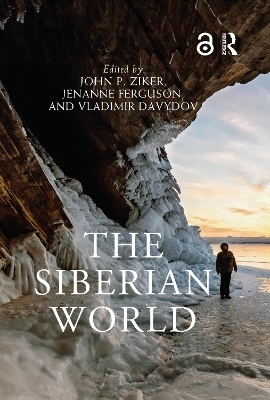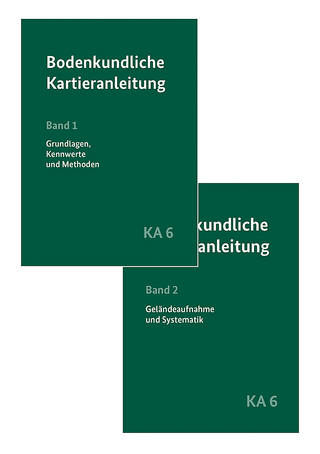
The Siberian World
Routledge (Verlag)
978-0-367-37475-4 (ISBN)
The Siberian World provides a window into the expansive and diverse world of Siberian society, offering valuable insights into how local populations view their environments, adapt to change, promote traditions, and maintain infrastructure.
Siberian society comprises more than 30 Indigenous groups, old Russian settlers, and more recent newcomers and their descendants from all over the former Soviet Union and the Russian Federation. The chapters examine a variety of interconnected themes, including language revitalization, legal pluralism, ecology, trade, religion, climate change, and co-creation of practices and identities with state programs and policies. The book’s ethnographically rich contributions highlight Indigenous voices, important theoretical concepts, and practices. The material connects with wider discussions of perception of the environment, climate change, cultural and linguistic change, urbanization, Indigenous rights, Arctic politics, globalization, and sustainability/resilience.
The Siberian World will be of interest to scholars from many disciplines, including Indigenous studies, anthropology, archaeology, geography, environmental history, political science, and sociology.
Chapter 25 of this book is freely available as a downloadable Open Access PDF at http://www.taylorfrancis.com under a Creative Commons Attribution-Non Commercial-No Derivatives (CC-BY-NC-ND) 4.0 license.
John P. Ziker is Professor and Chair of the Department of Anthropology at Boise State University in Boise, Idaho, USA. His work focuses on social networks, climate change, and demography. Jenanne Ferguson is Assistant Professor in the Department of Anthropology, Economics and Political Science in Edmonton, Alberta, Canada. Her work in linguistic and sociocultural anthropology focuses on Indigenous and minority language revitalization, urbanization and globalization, and linguistic creativity/verbal art. Vladimir Davydov is Deputy Director for Science at Peter the Great Museum of Anthropology and Ethnography (Kunstkamera) of the Russian Academy of Sciences, St. Petersburg and research fellow in the Chukotka branch of North-Eastern Federal University, Anadyr, Russia. His work focuses on mobility, infrastructure, human–animal relations, reindeer herding, anthropology of food, and the history of Siberian ethnography.
Introduction: Introduction to the Siberian World; John P. Ziker1, Jenanne Ferguson2, and Vladimir Davydov3; Part 1: Indigenous Language Revival and Cultural Change; 1. Language Vitality and Sustainability: Minority Indigenous Languages in the Sakha Republic; 2. (Socio)linguistic Outcomes of Social Reorganization in Chukotka; 3. Kŋaloz’a’n Ujeret’i’n Ŋetełkila’n – Keepers of the Native Hearth: The Social Life of the Itelmen Language – Documentation and Revitalization; 4. The Phenomenology of Riverine Names and Hydrological Maps among Siberian Evenki; 5. The Tundra Nenets’ Fire Rites, or What is Hidden Inside of the Nenets Female Needlework Bag Tutsya?; 6. Transformations of Cooking Technologies, Spatial Displacement, and Food Nostalgia in Chukotka; ; Part 2: Land, Law, and Ecology; 7. Customary Law Today: Mechanisms of Sustainable Development of Indigenous Peoples ; 8. Indigenous Land Rights and Land Use in Siberia: Neighboring Jurisdictions, Varied Approaches; 9. Evenki "False" Accounts: Supplies and Reindeer in an Indigenous Enterprise; 10. Climate Change through the Eyes of Yamal Reindeer Herders; 11. Nature on the Move: Boreal Forest, Permafrost, and Pastoral Strategies of Sakha People; ; 12. Fluctuating Human-Animal Relations: Soiot Herder-Hunters of South-Central Siberia; 13. Ecology and Culture: Two Case Studies of Empirical Knowledge among Katanga Evenkis of Eastern Siberia ; ; Part 3: Co-Creation of People and the State ; 14. Dancing with Cranes, Singing to Gods: The Sakha Yhyakh and Post-Soviet National Revival; , ; 15. Double-Edged Publicity: The Youth Movement in the 2000s Buryatia; 16. Soviet Debris: Failure and the Poetics of Unfinished Construction in Northern Siberia; ; 17. Local Gender Contracts and the Production of Traditionality in Siberian Old Believer Places; 18. Arctic LNG Production and the State (the case of Yamal Peninsula) ; 19. Biography of Alcohol in the Arctic Village; 20. Sanctioned and Unsanctioned Trade; 21. Longitudinal Ethnography and Changing Social Networks ; ; Part 4: Formal and Grassroots Infrastructure and Siberian Mobility; 22. Evenki Hunters’ and Reindeer Herders’ Mobility: Transformation of Autonomy Regimes; 23. The Infrastructure of Food Distribution: Translocal Dagestani Migrants in Western Siberia; 24. Development Cycles of Cities in the Siberian North ; 25. What Difference Does a Railroad Make? Transportation and Settlement in the BAM Region in Historical Perspective; 26. Stuck in Between: Transportation Infrastructure, Corporate Social Responsibility and the State in a Small Siberian Oil Town; 27. Hidden Dimensions of Clandestine Fishery: A Misfortune Topology Based on Scenarios of Failures; 28. Infrastructural Brokers in a Logistical Cul-de-sac: Taimyr’s Wild Winter Road Drivers; ; 29. Ice Roads and Floating Shops: The Seasonal Variations and Landscape of Mobility in Northwest Siberia; Part 5: Religious Mosaics in Siberia; 30 Contemporary Shamanic and Spiritual Practices in the City of Yakutsk;; 31.The Making of Altaian Nationalism: Indigenous Intelligentsia, Oirot Prophecy, and Socialist Autonomy, 1904-1922; 32. Missionaries in the Russian Arctic: Religious and ideological changes among Nenets reindeer herders; 33. Nanai post-Soviet Shamanism: "true" shamans among the "neo-shamans"; 34 Feeding the Gi’rgir at Kilvei: An exploration of human-reindeer-ancestor relations among the Siberian Chukchi; 35. Feasts and Festivals among Contemporary Siberian Communities ; 36. Animals as a Reflection of the Universe Structure in the Culture of Oka Buryats and Soyots; ; Part 6: Conceptions of History; 37. Economics of the Santan Trade: Profit of the Nivkh and Ul’chi traders in Northeast Asia in the eighteenth and nineteenth centuries; ; 38. Power, Ritual, and Art in the Siberian Ice Age: The Collection of Ornamented Artifacts as Evidence of Prestige Technology; 39.Archaeology of Shamanism in Siberian Prehistory; 40. Rock art research in Southeast Siberia: a history of ideas and ethnographic interpretations; 41. A History of Siberian Ethnography; ;
| Erscheinungsdatum | 06.08.2022 |
|---|---|
| Reihe/Serie | Routledge Worlds |
| Zusatzinfo | 13 Tables, black and white; 34 Halftones, black and white; 34 Illustrations, black and white |
| Verlagsort | London |
| Sprache | englisch |
| Maße | 174 x 246 mm |
| Gewicht | 1580 g |
| Themenwelt | Naturwissenschaften ► Geowissenschaften ► Geografie / Kartografie |
| Sozialwissenschaften ► Ethnologie | |
| Sozialwissenschaften ► Soziologie ► Spezielle Soziologien | |
| ISBN-10 | 0-367-37475-7 / 0367374757 |
| ISBN-13 | 978-0-367-37475-4 / 9780367374754 |
| Zustand | Neuware |
| Haben Sie eine Frage zum Produkt? |
aus dem Bereich


